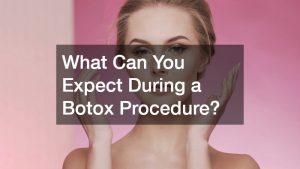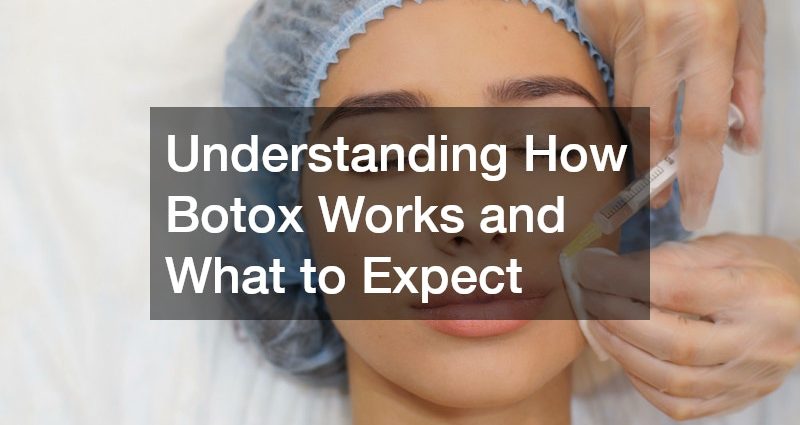
Introduction
Botox, a purified protein derived from the bacterium Clostridium botulinum, is renowned for its ability to temporarily fade the appearance of fine lines and wrinkles. While initially popularized as a cosmetic treatment, its uses have expanded to solve various medical challenges. This article explores the dual role of Botox in both beauty enhancement and medical intervention, providing insights into what one can anticipate from a treatment session.
What is Botox and How Does it Work?
The Science Behind Botox
Botox functions by blocking the nerve signals that cause muscles to contract. Once injected, it inhibits the release of acetylcholine, a neurotransmitter essential for muscle contraction, thereby relaxing the muscles. This biochemical action temporarily softens wrinkles, providing a smoother appearance to the skin.
The effectiveness and safety profile of Botox come from its highly purified state, ensuring minimal adverse reactions when administered correctly. It primarily targets dynamic wrinkles, those formed by repeated facial movements. Through this mechanism, Botox not only provides aesthetic benefits but also alleviates pain by disrupting unnecessary muscular contractions.
Fascinatingly, the roots of Botox lie in an attempt to understand food poisoning. Scientists discovered that minuscule, controlled doses of the toxin could have beneficial uses, notably in disrupting problematic muscular activity. Botox’s ability to interfere with nerve signals and muscle interactions marks its unique place in medical history.
Medical versus Cosmetic Uses
While Botox is largely celebrated for its wrinkle-reducing prowess, it holds significant medical value as well. Medically, it is employed to treat chronic migraines, excessive sweating, and certain muscular disorders. Such versatility underscores the importance of distinguishing between Botox’s cosmetic and therapeutic applications.
In the realm of aesthetics, Botox is primarily utilized to smooth crow’s feet, forehead lines, and other facial creases. The convenience of minor downtime makes it a sought-after beauty enhancement procedure. Meanwhile, patients with medical conditions like cervical dystonia find relief through the same administered toxin, highlighting its adaptability.
Botox’s dual functionality often leads to misconceptions about its usage. Some believe that treatments are purely for vanity, overlooking its substantial medical contributions. Understanding these diverse applications encourages informed conversations and dispels myths surrounding its broad spectrum of benefits.
Common Misconceptions About Botox
Many apprehensions about Botox stem from misunderstandings and misinformation. A prevalent myth is that Botox leads to a perpetually frozen face, but when performed by skilled professionals, natural expression is maintained. It’s crucial for users to differentiate between inexperienced administration and the procedure itself to ensure desired outcomes.
Another common misconception is the belief that Botox is exclusively for older individuals. In reality, younger adults also opt for preventive treatments to delay the visible effects of aging. Such preventative measures can significantly contribute to maintaining a youthful appearance over time without drastic interventions.
Concerns about safety and addiction often deter potential patients. However, Botox is a temporary, non-addictive procedure, and its effects gradually diminish without perpetuating dependency. Clarifying these myths helps individuals make informed choices regarding their cosmetic and medical needs.

What Can You Expect During a Botox Procedure?
Preparing for Your Botox Appointment
Ahead of a Botox session, individuals should consult with their healthcare provider to discuss their goals and medical history. It’s advisable to avoid blood-thinning medications and supplements to reduce the risk of bruising. Arriving with a clean face free from makeup ensures optimal conditions for the procedure.
Clinicians often recommend avoiding alcohol and cutting down on caffeine for up to 24 hours before the appointment to minimize potential side effects. Staying hydrated and well-rested aids in the body’s response to the injection. Thorough preparation enhances the overall experience and outcome of the treatment.
Open communication between patient and practitioner paves the way for a successful session. Positively negotiating expectations and addressing any concerns ensures shared understanding and satisfaction. A well-prepared patient contributes to a smoother, more comfortable procedure.
The Procedure Step-by-Step
During the treatment, a clinician begins by cleansing the target area to maintain hygiene. They then mark specific sites for injection, ensuring precision and accuracy in targeting necessary muscles. A tiny needle is used to administer the Botox, which results in minimal discomfort akin to a pinprick.
The process typically lasts between 10 and 30 minutes, depending on the number of areas treated. Patients often describe the sensation as a brief sting with no requirement for anesthesia. The clinician monitors the patient post-injection to verify the absence of immediate side effects.
Once complete, patients can expect to resume regular daily activities shortly thereafter, although they are advised against strenuous exercise immediately following the session. Understanding the procedure helps in easing any pre-session anxiety and paves the way for realistic expectations. These steps ensure the efficient and effective delivery of results.
Immediate Aftercare and Recovery
After the procedure, a gentle touch is recommended around the treated areas to prevent unwanted displacement of the Botox. Practitioners recommend avoiding lying flat or engaging in rigorous physical activities for several hours. Refraining from rubbing the area significantly contributes to optimal outcomes.
Common side effects include mild redness or swelling at the injection sites, which typically resolve within hours. It’s important to adhere to specific aftercare instructions provided by the healthcare provider for swift recovery. Patients are encouraged to schedule a follow-up appointment to discuss results and address any further queries.
Within days, noticeable improvements become apparent as the muscles gradually relax. Clear communication about any unexpected experiences ensures nothing is left unattended, promoting satisfactory results. Understanding and applying effective aftercare practices is crucial to maximizing the procedure’s benefits.
Conclusion
The journey of understanding Botox spans from its origin in scientific discovery to its applications in modern medicine and cosmetics. With enriched knowledge on what Botox truly entails, individuals can make thoughtful, informed decisions regarding its treatment. As Botox continues to evolve in both fields, the importance of informed application remains central to achieving desired outcomes.

